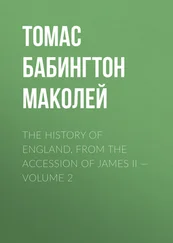Essentially, no matter how hard we try, architectural history is determined by the accidents of survival; extant buildings will always have a primary claim over the historian’s understanding. Archaeology can fill in the gaps and topographical sources can show what things once looked like, but there is no substitute for a surviving structure. In this book I have deliberately chosen as examples buildings that survive. This is to encourage people to go out and see places they perhaps would never otherwise have thought of visiting. But I have not shirked from mentioning, sometimes in depth, important buildings that are now lost. This is because, without them, we cannot understand what happened.
So the task I have set myself is a difficult one and I suspect I have not entirely succeeded. The fact is that writing architectural history, avoiding the pitfalls I have just set out, is complex and raises issues that do not arise in the evaluation of music, painting or literature. 11The most important and obvious of these is the utility of architecture. A building cannot be understood in isolation from its function and it is not possible to separate its aesthetic effect – or its historical significance – from the function that it fulfils. Similarly, the location of a building cannot be separated from its effect and significance. Most art forms are mobile. Architecture is not, and it can only be comprehended in the context of its surroundings. Third, although new inventions are made in other art forms, such as acrylic paint in fine art or the electric guitar in music, architecture is fundamentally fashioned by developing technology. The invention of the sash window, of plate glass, structural cast iron or reinforced concrete all opened new chapters in architectural aesthetics, performance and functionality. For these reasons, function, locality and technology play a very large role in this book.
Leaving behind some of the problems of this enterprise, I now want to turn to some overarching ideas that affect the whole story I have to tell. They will be covered in more detail in the following chapters, but a few moments’ consideration here will, I think, help set the scene.
Let us start with England. It is small. France covers 212,209 square miles; England covers only 50,333. It is on an island but is not itself an island, accounting for 57 per cent of a landmass also occupied by Wales and Scotland. As an offshore island, on the edge of a continent, Britain has an extraordinarily rich geology. Pumped, pummelled and folded by tectonic activity for three billion years, it has a variety of underlying strata not found on a great landmass. A traveller across the United States might go for hundreds of miles before noting a change in scenery; in most parts of England changes come thick and fast, influenced by over seven hundred types of soil and their underlying geology. England is the most fertile and easily cultivated part of Britain: only 13 per cent of its land is upland (i.e. over 600ft); in Wales and in Scotland the figures are 42 per cent and 48 per cent respectively. Yet England itself is divided into lowlands and uplands by a line that runs between Teesmouth and Torquay. This is a fundamental determining factor in both agriculture and building. In general terms, in the lowlands farming is arable and in the uplands livelihoods are maintained by grazing livestock. Upland or lowland, England is an extremely fertile country with a temperate climate, and the successful and innovative practice of agriculture, in a variety of guises, was a crucial factor in its early economic development.
The Customs House, King’s Lynn, Norfolk – a building for merchants, built by merchants to advance sea trade.
What lay beneath the fertile meadows and ploughed soils later came, perhaps, to be even more important. From the early Middle Ages the presence of flint, slate, limestone, brickearth and millstone grit, to name a few, influenced the form and appearance of man-made structures; but, decisive in England’s history, was the exploitation of clay, salt, metal ores and, particularly, huge amounts of coal. It was coal, extracted at first for the domestic needs of Londoners but later to power industrial production, that was first to transform Britain and then the world.
The geographic and geological distinctiveness of England, the individuality of its regional building traditions and the diversity of its economy make it hard to write a history of English building. Some recent books have acknowledged this, taking a regional approach and declining to paint a national picture. 12This is welcome, as generalisations about change in any one period in any one place are almost certain to be compromised by examples taken from other parts of the country. Yet it is possible to paint a national picture and desirable to do so. This book relies on the fact that the diversity of building in England means that although national generalisations might not be quite right, they are equally likely not to be completely wrong.
The Roman historian Tacitus wrote of Britain that ‘nowhere does the sea hold wider sway … in its ebb and flow, [it] is not held by the coast, but passes deep inland and winds about, pushing in among highlands and mountains, as if in its own domain.’ It was up Britain’s rivers that attackers came, from the Vikings to the Dutch, and down those same rivers developed the trade that gradually placed them at the centre of a worldwide network of waterways. The seas around Britain were, of course, a major deterrent to potential invaders; although there were waterborne assaults on England after 1066, none was successful in taking England in battle. This fact is fundamental to England’s history as, unlike all of its European rivals, it was not continually overrun by adjacent states. Its boundaries, even those with Scotland, were fixed from an early date, giving it territorial stability and helping to establish itself as a nation state before 1066.
During the Middle Ages the sense of national identity grew strongly, but the Reformation significantly intensified nationalism, characterising Catholic Europe not only as hostile but as oppressed and poverty-stricken. Protestant England was increasingly seen by its inhabitants as a sort of chosen nation, blessed by God. The Civil War strengthened this underlying culture, and over the following century the idea of individual liberty safeguarded by parliament was added to it. Indeed, from the Viking raids to the First World War, national identity has been shaped by war. In particular, war with France: the Hundred Years’ War, the wars after the Reformation, intermittent war through the 18th century, and then the Revolutionary and Napoleonic wars of 1793 to 1815. As well as building and bolstering national self-image, these wars also accelerated social, economic and architectural change. This is a theme that runs throughout this book, which sees 1815 as a decisive moment in the national story. A final victory over France, with the help of its allies, put Britain into an unassailable position of world power, hurtling it into a century of rapid and fundamental transformation. 13

Rievaulx Abbey, Yorkshire was suppressed in 1538 and sold to the Earl of Rutland. A series of detailed accounts chronicle its partial demolition by the Earl over the following two years.
Trade was central to this. Being on an island, England had to use the seas in order to trade. It was not unique in being a seafaring nation, but, it was unique in that trade with countries other than Scotland had to be seaborne. If exports were bound for Calais, they might as well be bound for Bordeaux, too – or for that matter Bombay or Buenos Aires. In this way, once Britain had secured the freedom of the seas after its European wars it was in a position to build up a dominating global trading network.
Читать дальше













